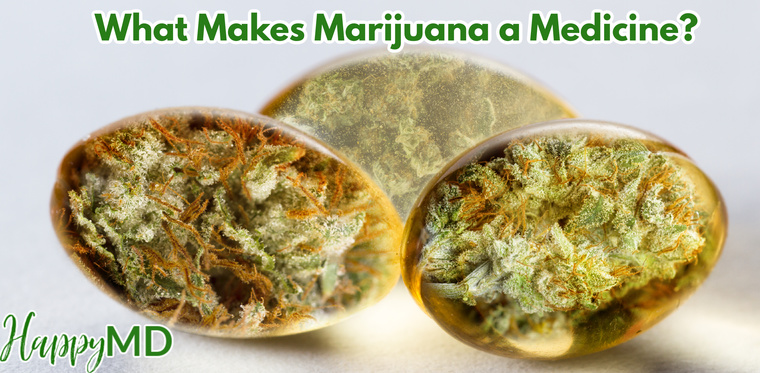
Explore Some Info On What Makes Marijuana a Medicine?
These days more and more people are becoming aware of the amazing medicinal properties of Cannabis. Over half of the states in the USA have passed legislation to allow qualifying patients’ access to this herb for medicinal use for conditions such as Cancer, HIV, Glaucoma, PTSD, Chronic Pain, Nausea, Muscles Spasms, Seizures, Appetite disorders and the list goes on and on.
OLD MEDICINE - THE AMERICAN MEDICAL ASSOCIATION PROTESTED THE PROHIBITION OF MARIJUANA
This herb has certainly been used as a medicine since ancient and probably pre-historic times. The earliest written reference describing the use of hemp to treat pain and inflammation is the Chinese Raya dating to 1500 B.C. Evidence exists of its use to treat pain and inflammation in Ancient Egyptian, Indian, Greek, Roman and Islamic Pharmacopoeias. Credit is generally given to Irish Physician William O'Shaughnessy for introducing cannabis into Western Medicine in the 1830’s. Following which time, it enjoyed increasingly widespread mainstream medical use, until prohibited in 1937 over the objections from the American Medical Association amongst others.
THE MANY INGREDIENTS OF CANNABIS - THEY WORK TOGETHER
In 1964, it’s most notorious ingredient, Delta-9 Tetrahydrocannabinol or THC, was discovered. Of course THC is the key ingredient to the high. Cannabis is both famous and infamous for but only 1 of over 60 related compounds called cannabinoids, along with other more common terpenes .
420EOL: Terpenes are medicinal compounds that give citrus, lemon, peppermint ; evergreen, and marijuana their smell.
In practice they (cannabinoids and terpenes) are more medically effective together than as isolated agents. This might explain why Dronabinol, a synthetic version of THC was approved as a schedule 2 drug in 1986, and then as a schedule 3 drug in 1999. Dronabinol is both less effective and more unpleasant than its unrefined herbal counterpart.
DISCOVERY - RECEPTORS ON CELLS AFFECTED BY CANNABINOIDS
It wasn’t until 1988 that the chemical receptors responding to cannabinoids were discovered in the human body and it is perhaps worth mentioning that all vertebrate animals, including fish, amphibians, reptiles, birds and mammals have these receptors distributed throughout the body, and most especially in the brain. In fact, the most prevalent of these receptors, the CB 1 receptor is one of the most common receptors within the central nervous system.
WHY CANNABIS WORKS - WHY NO ONE DIES FROM IT
Just check out this rat brain, the lit up areas show where the CB 1 receptors are concentrated. It’s also worth noting the lack of receptors in the brain stem, the area governing basic life functions like breathing, swallowing, heart rate, blood pressure, and consciousness. This part explains why cannabis is very safe as medicine go . Nobody has ever died from cannabis overdose.
IS CANNABIS DANGEROUS - COMPARED TO WHAT?
Now, whenever people ask me about some article they read citing a particular danger cannabis poses, I find it helpful to ask in response compared to what? Taken out of context any substance can be demonized.
OUR BODY'S OWN CANNABINOIDS
Now it’s estimated that animals developed cannabinoid receptors long before the cannabis plant was even present on the planet. So why do we have receptors? Well, if you’re not already there I’ll tell you, we synthesize our own activators of cannabinoid receptors in our bodies and we call them endocannabinoids, they own the distinction of being the first known lipid-based transmitters.
The 2 best know endocannabinoids, Arachidonoyl-Glycerol and Anandamide were both discovered in 1992. The primary function of this endocannabinoid system comprised of endocannabinoids and their receptors seems to be the maintenance of cell homeostasis in other words endocannabinoid synthesis is an adaptive response to cellular stress aim to maintain an established balance cell function. It does this in a number of ways and it’s kind of complicated and much remains to be learned yet, but one of the most fascinating ways happens at the junctions of nerves called synapses.
CANNABIS AND YOUR NERVES
Nerves communicate with one another at an extracellular space called synapse. When a nerve, which we’ll call the presynaptic nerve received the sufficient signal its electrical impulse causes the release of neurotransmitters pictured here as red dots traveling downward into the synapse, which they cross to find a corresponding receptor on another nerve which we’ll call the post synaptic nerve.
Whether the signal is excitatory as when glutamate is the neurotransmitter or inhibitory as with GABA their detection on post synaptic nerve receptors leads to release of the endocannabinoid to Arachidonoyl-Glycerol or to Ag pictured here as green dots traveling upward on demand from the lipids in the cell membrane into the synaptic space to travel in a retrograde fashion in relative to the nerve impulse until they find a CB 1 receptor on the presynaptic nerve.
The signalled CB 1 receptors then suppress a neurotransmitter release and signal and the 2 AG is rapidly degraded and so the presynaptic nerve is informed by the presence of 2 AG that it can reset as its message has been received, this is known as negative feedback. In other words the endocannabinoid system helps keep the nervous system calm, fine-tune and operating at maximum efficiency.
MARIJUANA AND STRESS HORMONES
It’s worth mentioning that stress hormones lead to a decrease in the expression of CB 1 receptors on presynaptic membranes and this makes sense in terms of survival because you don’t really want a relaxed nervous system if actual threat is imminent. The problem that rarely is the actual threat imminent, so chronic stress leads to a suppression of the endocannabinoid system and its homeostatic capacity, setting the stage for chronic degenerative changes and disease.
SUPPLEMENTING OUR CANNABINOID SYSTEM - HOW MARIJUANA IS A MEDICINE
What happens when we supplement our endocannabinoid with cannabis? First off, as a plant with wide variety of genetic expression, in terms of cannabinoids and terpenes present its effect can vary greatly depending on sample source, quantity used and method of delivery but generally speaking plant- based cannabinoids supplement the homeostatic contributions of the endocannabinoid system. The nervous and immune systems relax while the stress response along with the perception of pain, spasm and a host of other cellular stress-related symptoms is down regulated so the effects are usually advantageous to well-being.
Does cannabis used disrupt proper functioning of the endocannabinoid system? Generally speaking, this is not the case, it’s certainly possible to overdose, especially with edibles and concentrates and this can lead to side effects which while unpleasant are never life- threatening.
TOLERANCE TO MARIJUANA - LESS CAN BE MORE
Certainly heavy and chronic use of cannabis can lead to tolerance the carrying increased cannabinoid intake to achieve the same effect. But such tolerance must not to be mistaken for addiction. Cannabis use might be habit- forming, but then again so is playing on our computers and phones and generally a day or two of cannabis abstinence weekly proves the remedy to tolerance.
HAPPYMD: Licensed dispensaries still require Cannabis ID before adults can purchase cannabis based medicines. Come 2018, a doctor's recommendation allows you to avoid paying State and local tax, which is expected to amount to at least $50 per ounce, and probably $80. Our process to issue Marijuana ID Cards, Physician's Recommendations, Cultivation permits are done 100% online, and only takes a few minutes of your time. Note that patients are not required to pay until they are approved.



.png)